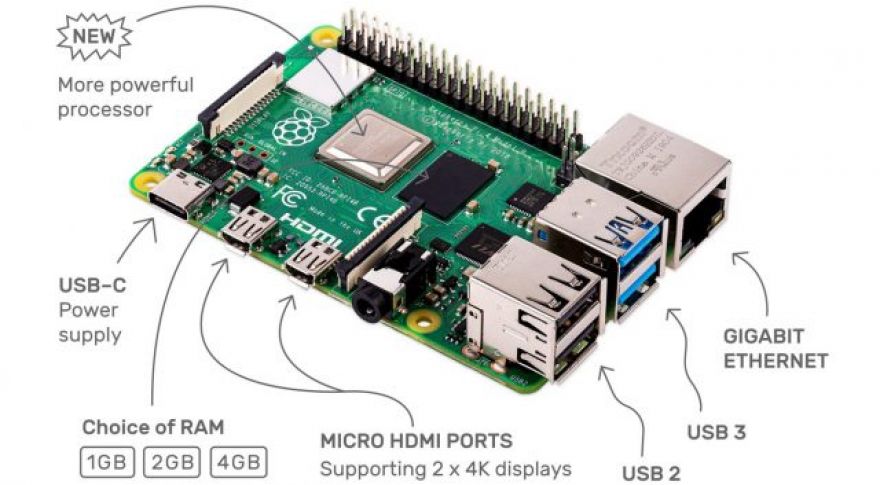
The Raspberry Pi 4 Has a Flawed USB-C Port
One of the primary selling points of USB Type-C is that it can become a universal standard — one cable for power, data, video, and more. Not all implementations of Type-C are created equal, though. The Raspberry Pi 4 , moving from micro USB to USB-C for power. However, it looks like the designers made a crucial error in designing the board that limits which USB-C cables you can use.
The Raspberry Pi 4 has been lauded for its improved specs while keeping the low price tag of the original. Starting at $35, the Raspberry Pi 4 has a more powerful Broadcom BCM2711 chip with four ARM Cortex A72 CPU cores at 1.5GHz.That chip can decode 4K videos at 60fps using HEVC/H.265, render OpenGL ES 3.0 graphics, and output 4K video to a monitor via micro HDMI.
Perhaps the most notable change was the move to USB Type-C for power. After all, many phones and laptops have shipped with USB-C cables for power and data for years, so you probably have a few of them laying around. It didn’t take long for Raspberry Pi 4 owners to realize something wasn’t right with the new micro-computer’s Type-C port. It turned on fine with some USB cables, but others didn’t supply any power.
Luckily, the Raspberry Pi is open hardware. So, it wasn’t hard to figure out what went wrong. According to Tyler Ward, the designers . USB Type-C has two CC pins, and each of them should have a separate 5.1K ohms resistor. However, the diagram below shows that both CC pins connect to the same resistor.
The problem is that many USB-C cables are what are known as “e-marked,” meaning they have chips inside that detect the capabilities of connected devices. You see these cables most often with laptops and phones that have high-wattage charging. If you plug one of those into the Raspberry Pi 4, it detects it as an audio accessory like earbuds or a 3.5mm adapter because of the incorrect resistor setup. As a result, the cable doesn’t supply power, and your Raspberry Pi won’t start up.
The best workaround right now is to just use a cheaper USB-C cable that doesn’t care about the CC pin design. There is an official Pi 4 charger for sale that will definitely work — it’s about $10 online. The Raspberry Pi Foundation will probably fix this design error in future board revisions, so you might get a more compatible device if you wait for that.
Now read: